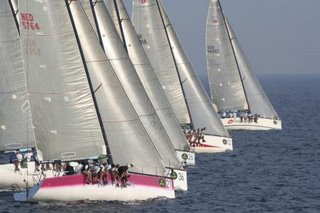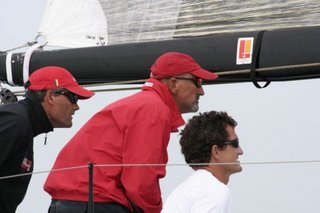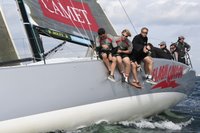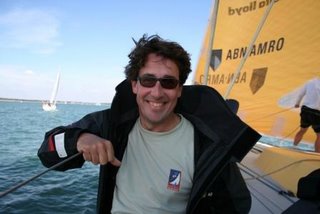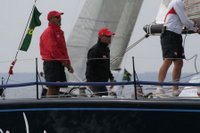
Mascalzone Latino breezes to a long cherished victory
Vincenzo Onorato has finally won the Rolex Farr 40 World Championships, a title that has consistently eluded him since he first took part in 1999. The first three days of the regatta were light wind affairs, but with the sea breeze blowing up to 18 knots today, Onorato’s Mascalzone Latino team turned in a masterful performance.
In the first race, Eivind Astrup sailed Norwegian Steam to his second win of the week, although the greater threat to Onorato’s overnight lead was Opus One, with German owner Wolfgang Stolz snatching a 3rd compared with Mascalzone’s 6th. In the next race it was Evolution’s turn to take the lead, with Richard Perini finally showing some of the form that earned him the world title in Sydney last year. However, another regatta underperformer - in the form of Steve Howe’s Warpath - stole the lead to win the race from Evolution, although of greater interest to the front runners was Mascalzone Latino incurring a 720-degree penalty turn at the first windward mark.
That could have been Onorato’s championship lost right there, but the determined Neapolitan grabbed back 12 places on the next downwind leg and recovered to 13th by the end of the race. Meanwhile Opus One had sailed another solid race and Stolz’s 7th place moved him to within three points of Mascalzone Latino.
Onorato refused to be ruffled by the 720 penalty. He said the key to winning this week was to “be cool, be concentrated”. He praised tactician Russell Coutts for keeping the crew calm and focussed: “Even if things went wrong, I was not upset. Before the last race, Russell told me, ‘This is the time to win race.’ I said, ‘Can we?’ And he said, ‘Of course!’ And we won the race.”
Indeed they did, with Mascalzone Latino launching off the middle of the start line in clear air, leading around the windward mark and dominating the final race from start to finish. Going into that race, Barking Mad was still in contention despite a lacklustre 13,9 from the earlier heats. At the windward mark Jim Richardson rounded second behind Onorato, and while the local Newport sailor knew that his chance of victory was slipping away, he was at least looking good for second overall.
Things changed dramatically down the final run to the finish. The wind softened and shifted right at the same time. The boats that gybed early profited from the sudden change in conditions, while Barking Mad was left stranded on one side. The American team dropped from 2nd to 12th in one leg. Meanwhile Australian boat Ichi Ban slipped down the right side of the run to finish 6th and claim the runner-up spot in the championship. “That final leg was indicative of our whole regatta,” said Barking Mad tactician Terry Hutchinson. “Obviously there was a shift there and I missed it. We sailed into a light spot, and the fleet sailed by. We didn’t quite have it today, didn’t quite have it the whole regatta. We battled the entire week. But it just makes you appreciate how hard winning is.” Barking Mad finished third overall.
Another boat that got left stranded on the final run was Opus One, who just missed out on the podium. Wolfgang Stolz commented: “The last run was a bitter disappointment, dropping 15 places, running out of breeze. But we’re very pleased to have got a top 10 result this week.” The German crew finished fourth overall.
Ichi Ban’s owner Matt Allen was delighted to have grabbed second overall. “We’re ecstatic, it’s a great result. Vincenzo, Russell and the guys did a great job and never really opened the door for anyone. They sailed a great regatta and they deserved to win.”
Vincenzo Onorato has won many championships before, but for him this victory is the sweetest of all. “I have won four world championships as a helmsman, in IMS racing and in the Mumm 30, but this is the best. Sometimes I have won when I didn’t deserve it, but this time we deserved to win. The Farr 40 is the best offshore boat in the world, she’s beautiful, she’s like a nice blonde. This is the best time of my life.”

